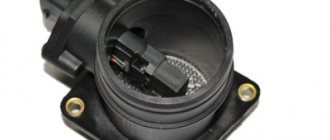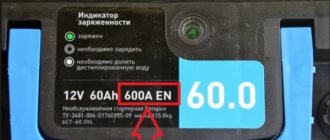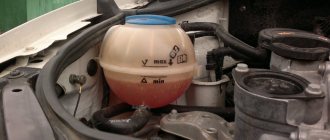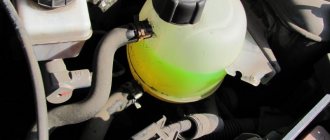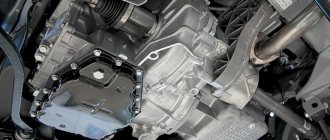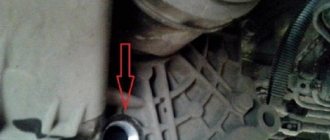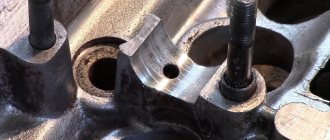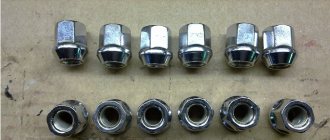Many motorists driving a Lada Priora encounter some problems after using it for a long time. Priora consumes oil - this malfunction occurs more often than others.
High oil consumption should alert the driver and serve as a reason to send his own car for diagnostics to a specialized service center.
Purpose of motor oil
The operating manual of any machine contains information about oil consumption. Lubricating fluid allows all car components to operate fully and efficiently. When driving, many interconnected processes take place in the engine.
Friction appears between contacting parts, which has a destructive effect on motor parts. Motor oil reduces the negative effects of friction and wear of spare parts.
With increased Priora oil consumption, the contacting parts are not able to properly perform their task. They are subject to abrasion, the engine jams and breaks. In order for the machine to operate continuously and for a long time, it is necessary to control the volume of oil fluid.
After replacing the valves in the Priora, an engine knock appeared
The action force is equal to the reaction force. Almost always, improvements on the one hand - lightweight connecting rods - carry a hidden threat and the occurrence of undesirable consequences on the other hand - knocking in the Priora engine after replacing the valves.
The connecting rod experiences enormous loads, especially at high speeds. And in the event of emergency situations: the meeting of the valves with the piston when the valve bends, or deformation of the lower part of the connecting rod head in the event of a lack of oil and as a result of overheating, the geometry of the connecting rod changes. Changing the geometry leads to the fact that the axes of the holes in the lower and upper parts become non-parallel. In this case, the piston will work with a misalignment, its wear will be more significant, as well as wear of the cylinder wall, and as a result, knocking of the Priora engine will appear. The knocking can be eliminated only by replacing parts. You can reduce it and extend the service life using the RVS additive to restore the GA4 motor, however, this is only a temporary measure.
Why is lubricant quickly used up?
"Priora", despite its modern engine, "eats" a lot of oil. The reasons for this are as follows:
- the appearance of a leak;
- wear of spare parts;
- low quality motor oil;
- exceeded operating period;
- burning of oil liquid.
Often, car oil leaks occur due to poor crankcase ventilation. This happens because the exhaust enters the crankcase through the piston rings. Gases create increased compression, which disrupts the normal flow of processes in the unit. The oil is simply squeezed out of the engine.
Why do Priors eat oil, besides the reasons listed above? Oil is probably leaking from the valve plug or oil filter. To eliminate such leaks, the lining must be replaced. Constant vibration exposure, high loads, trips over rough terrain - all this causes various leaks.
Oil leaking from under the engine
Synthetics have good viscosity characteristics, ensuring the uninterrupted functioning of all units. It contains many additives that soften and partially eliminate the consequences of the negative impact on the power unit.
You may be interested: What are the consequences of a high oil level in an automatic transmission?
Mineral water does not have the advantages of synthetics. It pollutes the lubricating complex with its own combustion products. As a result, it turns out that the car “eats” oil.
An excessive operating period may also be the reason that the machine eats oil. Since the characteristics of the motor oil deteriorate during operation, some of the lubricant evaporates and burns out.
This negatively affects the car engine. Timely measures taken will allow the power unit to operate without failures for a long time.
Engine oil consumption rates according to the manual
Lada Priora is equipped with four power units of different modifications and each of them has a certain oil consumption:
- VAZ-21116 (8cl, 1.6l, 87hp) – 50 g/1000 km
- VAZ-21126 (16cl, 1.6l, 98hp) – 50 g/1000 km
- VAZ-21127 (16cl, 1.6l, 106hp) – 50 g/1000 km
- VAZ-21128 (16cl, 1.8l, 98hp) – 300 g/1000 km
As you can see, for the first three power units the consumption rate does not exceed 50 g per 1000 kilometers, and the last engine, which is a modernized version of the engine from the VAZ 21127, consumes much more.
The key feature of the 1.8-liter engine is that, while the block height remained unchanged, the piston stroke was increased due to a different crankshaft. This was realized using short connecting rods. This design solution led to increased load on the following engine elements:
In some cases, if there is excessive wear of parts of the Priora power unit, there is oil in a volume of up to 2-3 liters per 1000 kilometers.
Oil waste
The car can “eat” consumables due to burnout. This is due to the fact that the oil indicators do not correspond to the characteristics of a particular engine. An excessively liquid oil product will remain in the cylinder block and burn out. And if it is too thick, it will envelop the moving parts with a dense film, significantly complicating their movement.
All this will lead to increased oil costs. In view of this, you need to use only the lubricant recommended by the car manufacturer.
Severe burnout can occur due to worn valve seals. Identifying this problem is quite difficult. To prevent the lubricant from smoking, that is, to stop burning, the seals need to be replaced. The piston rings also need to be changed. If they wear out significantly, engine repair may be required.
Low quality oils
One of the reasons for increased consumption is the low quality of this same oil or the wrong choice. For each engine, including the Lada Priora, there are certain tolerances. But if you make the wrong choice, your consumption can skyrocket. For example, reduced viscosity can cause the rings to fail and collect lubricant from the cylinder walls. Therefore, the lubricant will settle on the walls of the combustion chamber and, as a result, will burn along with the fuel.
As a result, exhaust gases will come out in the form of bluish smoke, and the oil will settle as soot on the spark plugs. For the same reason, the rings become coked. Oil settles in a very thick layer on engine parts and components.
Violation of the tightness of sealing joints in the form of oil seals or gaskets
The appearance of oil from under the valve covers or cylinder head gasket. Where oil leaks, it mixes with dust and forms a characteristic coating. There can be several reasons for a leak:
- Failure of the gasket itself, since the product is rubber. The repair is not difficult, but requires care when tightening the bolts.
- The appearance of oil under the gaskets is caused by an increase in pressure in the engine lubrication system. There may be four reasons here:
- The first and most important is the failure of the oil pump pressure reducing valve, which maintains the pressure within certain limits. It can only be repaired by replacing this device.
- Second, use very viscous oil. Do not skimp on oil; fill in the oil specified in the service book by the car manufacturer.
- Third, clogged oil channels (for worn engines). Occurs when using various flushing liquids of dubious purpose (meaning “decarbonization”).
- Fourth, a violation of crankcase ventilation, in which gases accumulate under the valve cover and oil pressure begins to increase, oil appears in the air filter. Cause: The separator screen is clogged and needs to be cleaned.
- The appearance of oil leakage from under the seals. There are three reasons for this malfunction:
- First, the oil seal simply wore out over time.
- Second, the pressure in the car’s lubrication system is increased.
- The third option is the hardest. The rotating parts of the power unit wear out in the form of bearings, rings, half rings, etc. In this case, the alignment of the units is disrupted and the parts become distorted. There is no need to replace the oil seals in case of this malfunction; this will only give a temporary effect. The intervention of an engine repair specialist will be required.
May be interesting: How to check the oil level in an internal combustion engine
Eliminating the causes of increased consumption
If the engine fluid forms puddles under the car, it is relatively easier to fix this problem than disassembling the engine and doing a major overhaul. Once you can determine where the leak is coming from, all that remains is to fix it. In the case of a poorly screwed filter or drain plug gasket, this is easy to do.
Crankshaft oil seals, valve stem seals, and cylinder head gaskets are more difficult to change. In these cases, you will have to disassemble the power plant - to one degree or another. The main thing is not to make a mistake and correctly identify the worn part. The failure of the gaskets can be determined visually, but not always. And if you change, for example, the seals on the valves, then it’s better to do all of them at once. When the engine smokes, the piston oil scraper rings need to be replaced, and the compression rings must be changed along with them.
Damage to power plant mechanisms
Damage to the power plant mechanisms responsible for proper mixture formation and oil separation in the combustion chamber (piston scuffing, oil scraper rings sticking, valve burnout, disappearance of honing, etc.)
In this case, the oil enters the combustion chamber of the car, where it mixes with fuel and air vapors and burns completely. Oil consumption with such a malfunction can be enormous, more than 1 liter per 1 km. Black smoke begins to pour out of the exhaust pipe. This malfunction is caused by driving on a “cold” engine.
After 50-60 cold starts, honing sets the oil scraper rings with locks in one direction, the seal is broken and oil consumption increases. The skirt comes off the pistons, the valves burn out, the oil seals become hard. There is only one treatment - engine overhaul.
Reasons why Priora eats oil
Lada Priora is equipped with classic naturally aspirated engines that have a standard set of problems that affect increased oil consumption. These include:
- leakage through seals and seals;
- wear of piston rings;
- loss of elasticity of valve stem seals in the timing belt;
- poor crankcase ventilation.
Oil leakage often occurs as a result of a loose fit of the valve cover to the cylinder head, loosening of the crankcase to the cylinder block, and due to poor-quality filter gasket.
Priora sometimes consumes oil due to defective crankshaft seals. This problem can be detected by greasy stains on the asphalt.
The most common reason for increased oil consumption is the loss of elasticity of the caps, the purpose of which is to prevent lubricant from penetrating into the combustion chamber. The caps are rubber-metal products that fit tightly around the valves. High temperatures negatively affect their elasticity, which ultimately leads to lubricant entering the combustion chamber. An indirect sign of this problem is the appearance of black smoke from the exhaust pipe.
Wear of the piston rings occurs due to the use of low-quality lubricant or insufficient quantity. The increased gap between the piston rings leads to oil leakage into the combustion chamber, where it is disposed of. The gases pushing the piston enter the engine crankcase, creating excess pressure and pushing the lubricant through the seals, gaskets and vent pipe.
If the Priora eats oil and does not smoke, the reasons can only be due to the types of leaks described. An important factor in increased lubricant consumption is driving style. If the driver prefers to drive and rev the engine at high speeds, this will certainly lead to increased lubricant consumption.
Oil leak through breather
Oil loss through the breather is a very unpleasant problem. A breather is a device that compares the crankcase pressure of a power plant with atmospheric pressure. Without it, air would not get into the engine at all. Reasons for this malfunction:
- Air filter condition. The engine simply doesn't have enough air.
- Filling the lubrication system above a certain level. The excess is simply squeezed out through the breather.
- Worn oil scraper rings. As a result, excess pressure appears in the engine crankcase, which expels oil through the breather.
If the first two faults are easy to deal with, then the third one will have to go to a service station. Very rarely, the oil deflector rod may become clogged. In this case, gasoline and oil vapors do not pass into the oil separator, but are deposited in the breather, and a characteristic smell of gasoline is present.
Troubleshooting methods
The first thing to do when you detect increased oil consumption is to find possible leaks by carefully inspecting the valve cover. If there are streaks on the engine crankcase pan, drain the oil, then unscrew the pan and change its gasket, preferably installing it with sealant.
If there is a leak through the crankshaft seals, replacing them yourself will be very problematic. It is better to contact a service station.
To prevent the problem of clogging of the ventilation system, it is necessary to regularly clean the ventilation system pipes: approximately every 50 thousand kilometers.
You should be careful about the quality of the lubricants used. They must comply with the manufacturer’s recommendations and be selected taking into account the climatic zone of the vehicle’s operation.
By following all the necessary recommendations, eliminating the indicated malfunctions and abandoning an aggressive driving style, you can significantly reduce oil consumption.
Conclusion
The choice of oil for the car must correspond to that recommended in the operating instructions. Replace filters in a timely manner and monitor the condition of the coolant.
Be sure to warm up a cold engine, especially in winter. Do not use flushing fluids from unknown manufacturers. With this approach, the heart of your car will work for a long time and without loss of oil.
Died
I love cars in all forms. I've been tinkering under the hood since childhood. I know all the ins and outs of Russian cars and some imported ones. I will be happy to share my knowledge with everyone who likes to do everything with their own hands.
How to change the oil mixture in Lada Priora
If the car’s warranty has already expired and there is no need to carry out scheduled maintenance at the dealer, in Lada Priora you can change the engine oil yourself. This process is simple. You just need to follow a certain sequence of actions. You must purchase in advance a 4-liter canister of motor fluid with suitable properties, as well as an oil filter. If you are going to switch to a different viscosity or change manufacturer, you will additionally need to flush the engine.
Soft flushes, according to the conditions of their use, are poured 200–300 kilometers before changing the lubricant. During this time, they clean the engine of toxins. Others pour right before you change the oil. Then the engine idles for 5 minutes to half an hour. It all depends on the specific wash. You should prepare: your own set of wrenches, a container for used lubricant, rags.
- The engine warms up well, the car is placed on a lift or over an inspection hole.
- The filler neck under the hood is released. The drain plug is carefully unscrewed with a 17 key, and a container for draining is first placed in the bottom of the crankcase.
- The old oil is completely drained along with the flush. It is advisable to suck out the remaining lubricant from the bottom with a large syringe with a tube - after all, it is very difficult to park the car in an absolutely horizontal position.
- The old oil filter is unscrewed. A new one is installed, half filled with new grease.
- The drain plug is screwed in and about 3.5 liters of lubricant flows into the engine through the filler neck. The level is checked with a dipstick; it should be halfway between MIN and MAX.
- The engine starts and idles. After 5–7 minutes, the oil level is checked again. Top up if necessary.
Your car is ready to travel again until the next consumable replacement.


